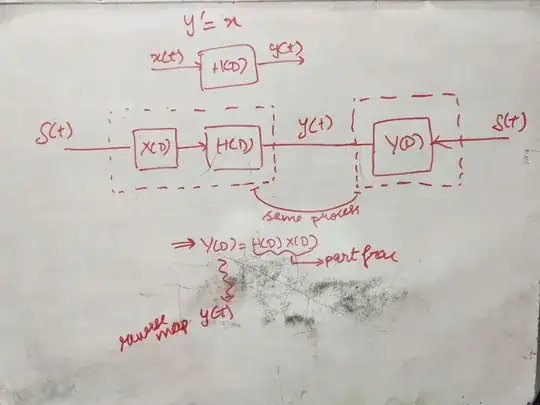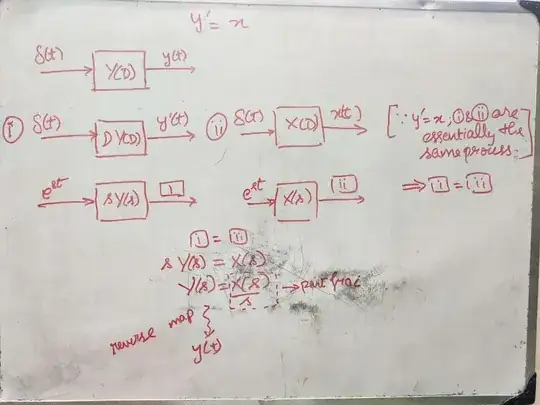I wrote an answer on Laplace Transform, following a series of lectures by Prof.Ali Hajimiri (kindly take a look at the answer, my question is entirely based on that answer). In this answer, though I was able to arrive at the Laplace transform with operational calculus, I had a hard time figuring out what "applying Laplace Transform on both sides" meant, from the standpoint of this answer.
I mapped out the steps involved in solving a differential equation, $y'(t)=x(t)$ with the operator-method and using the Laplace transform.
Laplace Transform method: While taking laplace transform on both sides of a differential equation, y'(t)=x(t) in this example, we are assuming y(t), is the impulse response of a system say sys1 and x(t) is the impulse response of another system say sys2. Y(D) be the system operator of sys1. Now we need y'(t), so the system operator becomes DY(D) to produce y'(t). And X(D) be the system operator of sys2. Since y'=x the two machines DY(D) adn X(D) must be the same. Now if we give an input $e^{st}$ to sys1 and sys2, we know the system operator for sys1 becomes sY(s) and for sys2 it's X(s). Now as these two systems are equal, sY(s)=X(s) which implies that Y(s)=X(s)/s. Now reverse map Y(s) to obtain y(t).
Is my interpretation correct?
As far as I can see, Laplace transform has just complicated things. How does it simplify the process. Why do we use Laplace transform? I understand that this question is highly specific. But if someone can help, it would be highly helpful. Thanks in advance.

